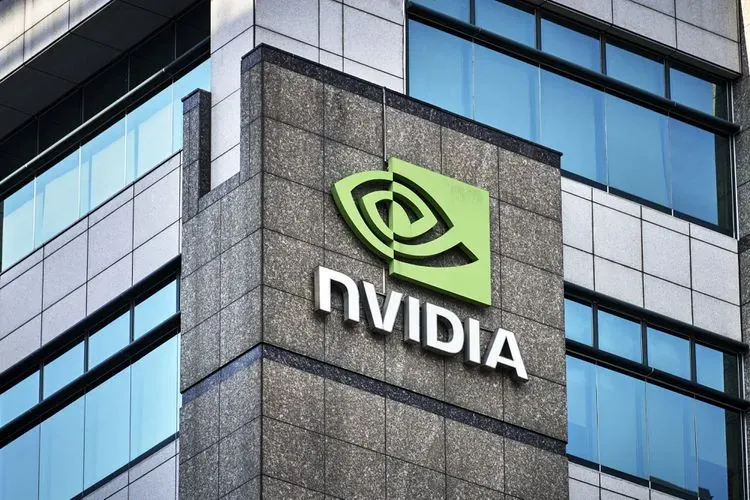Nvidia: from graphics cards to a global AI empire
Author: NaKmo Flow | 7/1/2025

🚀 The Beginning: From GeForce to Takeoff
Nvidia was born in Silicon Valley thanks to three engineers - Jensen Huang, Chris Malachowski and Curtis Prem. They believed: the future was in graphical computing. Already in 1995, Nvidia introduced its first product, the NV1 multimedia board. The real breakthrough came in 1999 with the launch of GeForce 256, the world's first GPU with hardware transformation and lighting (T\&L). It was then that Nvidia established itself as a future industry leader.
In the same year the company went public, and a little later - signed a contract with Microsoft to supply chips for the first Xbox. Nvidia was gaining momentum, and its name became synonymous with performance in games.
🎮 From games to supercomputers: How Nvidia changed focus
In the 2000s, Nvidia wasn't just expanding its graphics card lineup - it was changing the very concept of GPUs. After buying 3dfx (the legendary Voodoo chip maker), Nvidia did some serious research. The key was the creation of the CUDA architecture in 2007, a platform that allowed scientific and engineering computing to run on graphics cards.
It was CUDA that became the foundation for future growth in I&E, HPC (high performance computing) and robotics. It was the first time Nvidia made a bet on computing - and it was a good one.
📊 Financial Revolution: Growth in the Age of AI
The AI boom has been a springboard for Nvidia. From an annual revenue of $27 billion in 2022 to $60.9 billion in 2024, of which $47.5 billion came from the data center segment.
In May 2023, Nvidia's stock crossed a capitalization of $1 trillion, and in June 2024, it became the most valuable company in the world with a market valuation of $3.34 trillion, surpassing Microsoft and Apple.
- 2024 f.y.
- Revenue: \$60.92 billion (+126%)
- Profit: \$29.8 billion
- Capitalization: \$3.2-3.3 trillion.
💡 What does Nvidia produce today?
Nvidia is no longer just a video card manufacturer. It's a full-fledged infrastructure AI company with a wide range of products:
🎮 GeForce - for gaming
- RTX 20/30/40 - a line of GPUs with support for ray tracing (RT) and DLSS (neural network antialiasing).
- GeForce Now - cloud gaming.
- Shield - consoles and streaming devices.
🔬 For Business and AI
- Tesla/A100/H100/Blackwell - GPUs for neural networks and supercomputers.
- DGX-series - off-the-shelf AI servers.
- CUDA, cuDNN, TensorRT - ML software.
- Omniverse - meta-universe for 3D engineers and simulations.
🚗 Embedded solutions
- Jetson - boards for robots and IoT.
- Drive - autopilots and AI for cars (in partnership with Tesla, GM, Mercedes).
- Tegra - SoC chips for consoles (e.g. Nintendo Switch).
🧠 Why does Nvidia dominate AI?
Nvidia is the undisputed leader in AI hardware:
- Its GPUs are used to train GPT, Gemini, Claude and other LLMs.
- More than 80% of AI servers are built on Nvidia gas pedals.
- Leading data centers (AWS, Azure, Google Cloud) use its chips.
Even supercomputers like Summit, Frontier and Leonardo are built on Nvidia architecture.
⚔️ Competitors and Partners
Competitors:
- AMD (Radeon GPUs, Instinct gas pedals)
- Intel (Arc family, Gaudi AI chips)
- Google TPU, Apple M-series, Huawei Ascend
Partners:
- Amazon, Google, Microsoft - cloud providers with Nvidia solutions
- Tesla, Mercedes, GM, ZEEKR - automakers
- Cisco, Dell, VMware - IT infrastructure partners
🔮 The Future: Blackwell, Rubin, GR00T
At the GTC 2025 conference, Nvidia unveiled:
- GPU Blackwell Ultra - performance gains of up to 1.5×.
- DGX Spark and Station - compact AI servers.
- Dynamo OS - an operating system for AI infrastructure.
- GR00T N1 - an open platform for humanoid learning.
- Plans to 2027 - release of Rubin and Rubin Ultra with up to 14× gain
Nvidia is shaping the AI infrastructure of the future - from hardware to OS to cloud.
🏁 Conclusion: it's not just the chips, it's the ecosystem.
Nvidia is more than "video cards". This is the company that re-wrote the rules of computing, captured the AI market, and now offers everything from servers to simulators to autopilots to robotics.
Based on its roadmap and investments, its influence on the industry is only going to grow. Nvidia is well positioned in the Magnificent Seven, the tech giants shaping the future.